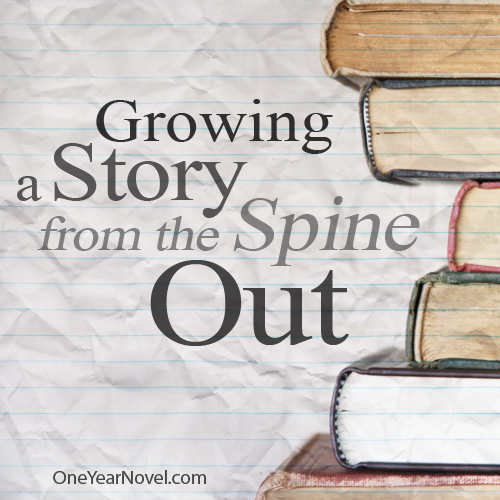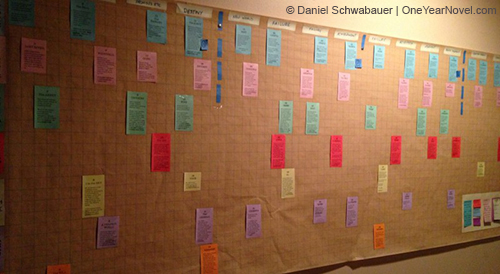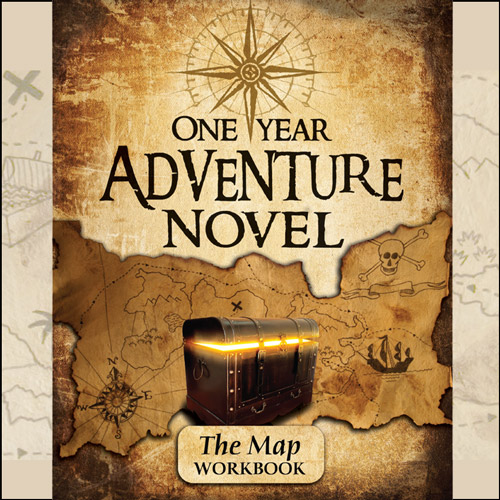Growing a Story from the Spine Out
Daniel Schwabauer
This is part 3 of an ongoing miniseries, Shadow Writing, telling “the story of a story”: my work-in-progress, a swordpunk novel. You may want to read Part 1 and Part 2 first.
Shadow Writing, Part 3
I sometimes wonder if my work-in-progress will ever be anything more than a private playground for my characters. I’ve already written about the book here and here, thinking my struggles might help someone else.
Of course, all of this self-analysis can go too far, just as one can go too far when plotting a book. In life and in art, we must leave room for spontaneity. Otherwise we risk producing sterile stories, devoid not only of flaws, but of movement. We risk freezing our lives into statues of white marble.
Nevertheless, I found myself a few months ago turning over my book idea for the umpteenth time, realizing the most recent version still lacked the same thing my previous attempts at the novel had lacked: real characters.
So I tried to decipher a new possibility of the story told through the eyes of seven point-of-view (POV) characters. These seven had volunteered for the job, knowing the odds stacked against them.
Of course, I warned them that even if I did finish the book most of them would not survive to the end.
“And if I don’t finish the book,” I said, “something worse than death awaits you: I will lock you in the trunk of my mind with the rest of my failed versions. And you will never get out. You will spend the rest of my days in a shadow of the Shadow. Do you still want the job?”
One of them, an ambitious political figure named Lectin, said, “We aren’t going anywhere.”
This surprised me. “I always thought you were more clever than brave.”
“It’s not courage,” he said. “It’s cold reason. The only way out for any of us is through the story. Even for you.”
This is how I found myself with a sticky web of plot threads that refused to untangle itself. I had images end events. I had characters and a setting and scraps of dialogue. But all of these pieces ran together. The story refused to arrange itself in a clear linear progression.
What I needed was a story skeleton, or at least a spine. Previous attempts to make a simple outline had been disappointing: somewhere I have a notepad thick with sketches of possible timelines, interconnecting scenes, changes in ideals. None of them worked.
When I realized these misbegotten sketches were lacking real characters, my solution was to tack an 8-foot roll of graph paper on my wall and write out every scene as a short sentence on colored sticky notes. The colors would represent each POV character, and would be arranged on a 3-Act timeline:
This may look like overkill, and perhaps it is, but it worked. At least, it worked in the sense that it did things my previous outlines did not.
1. The chart gave me a large visual picture of the story that enabled me to recognize holes in the plot. It helped me to measure how large a part each character in the story would play. This revealed weak areas that will need to be addressed.
2. Oddly enough, it made tackling the story easier. Before the chart, my novel seemed bigger than it was because I could never see all of it in my mind at a glance. The chart gave me a sort of aerial photo that has helped give boundaries and definition to the idea. Now the idea is not quite so daunting. (Though, to be honest, still pretty scary.)
3. The small blue squares that are visible in the top row represent key elements on which the novel’s plot turns. This intrigues me because I did not consciously place these elements where they occur in each Act. I placed the little blue squares last. They just “happened” to appear in the scenes that ended up being the major turning points. (In other words, the subconscious mind is pretty amazing.)
4. This new skeleton serves the same function any story outline serves: it’s a rough map of an uncertain journey. The journey may change course at any point; the map is only there to remind me of the landmarks and my destination. I am not committed to any one scene or its placement within the whole. In fact, as I have begun working on the new rough draft, the chart has already changed.
I see now that this chart is really a way of working from the outside of the story inward. That is, it has allowed me to reshape the images I created when writing previous drafts into the story frame I had been looking for all along.
From now on, my work will be shaping the story from the spine out: re-creating the narrative through the eyes of the seven POV characters.
Later continued in Part 4






Whew, amazing!
I’ve gotta try this…